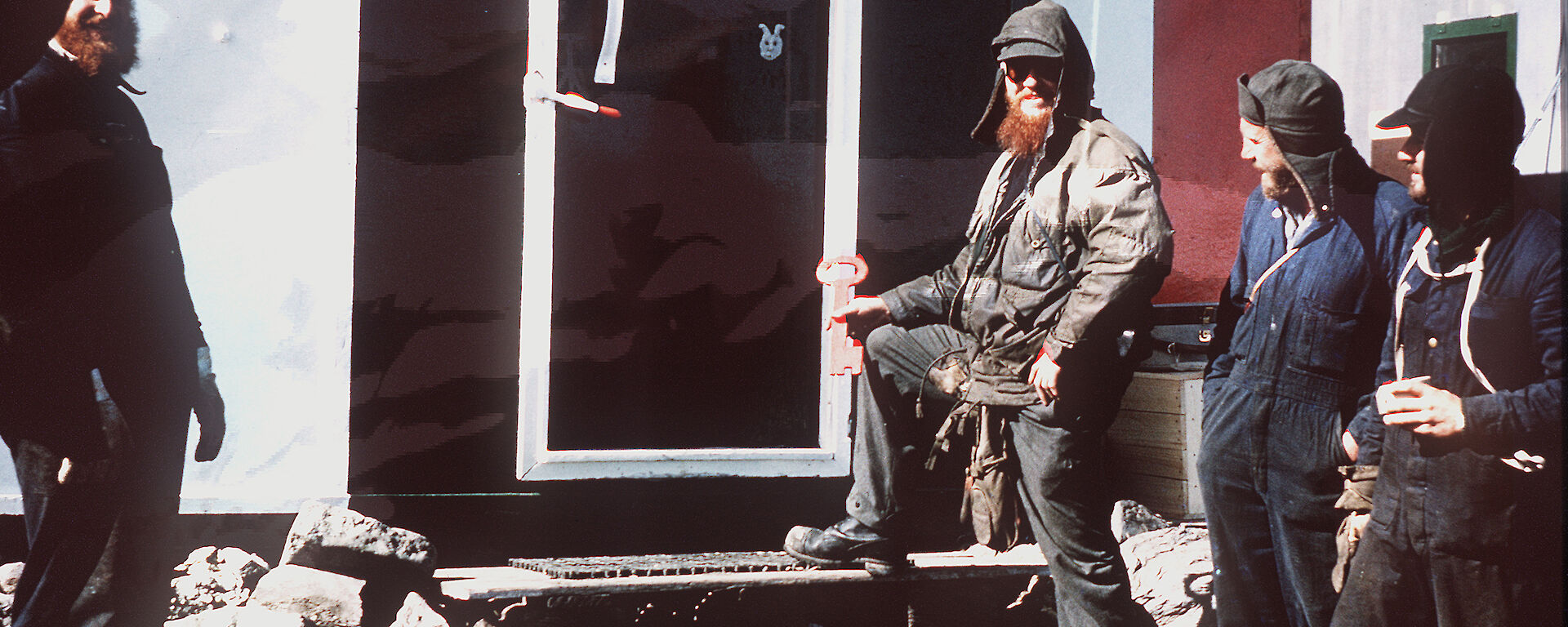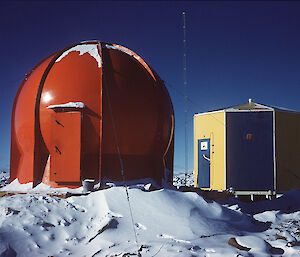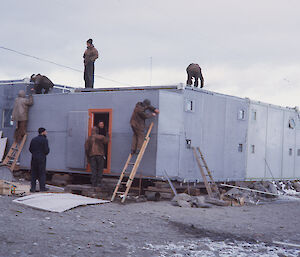Davis station was named after the legendary Antarctic mariner, John King Davis. Due to its relatively mild Antarctic climate and location on the coastal edge of the Vestfold Oasis, Davis is known as the ‘Riviera of the South’. Davis station is the only ANARE station that has not been continuously occupied. It was closed from 1965 to 1968 to concentrate the limited resources on building Australia’s third station, Casey.
In recognition of its historical cultural value, Davis was registered on the Register of the National Estate in 1999. Of the 37 station buildings that are included in the assessment, 3 are identified as having exceptional cultural significance, and 4 as having considerable cultural significance.
Several sites and huts in the area around Davis station also hold significance. These include:
- Platcha Hut – the oldest surviving field refuge in the Davis area. It is the only example of this type of ANARE field refuge remaining in near to original condition. It is also the only example of an early ANARE automatic weather station.
- Brookes Hut and Watts Hut – these are 2 of the 4 huts that represent a small number of surviving Post Tensioned Boxes (PTB) Mark 111 structures used as field refuges at ANARE stations.
- The Mikkelsen Cairn – this cairn marks the discovery of the Vestfold Hills, and the first known landing by a woman (Carolyn Mikkelsen) in Antarctica in 1935.
- Walkabout Rocks – one of 3 Wilkins’ Sites in the region. It marks the location at which Sir Hubert Wilkins asserted Australia’s territorial claims It is the only memorial of early Australian visitation to this part of the AAT.
- Law Cairn – this cairn marks the first ANARE landing in the Vestfold Hills. This visit by Phillip Law was an important precursor to the later establishment of an Australian presence in the area.





